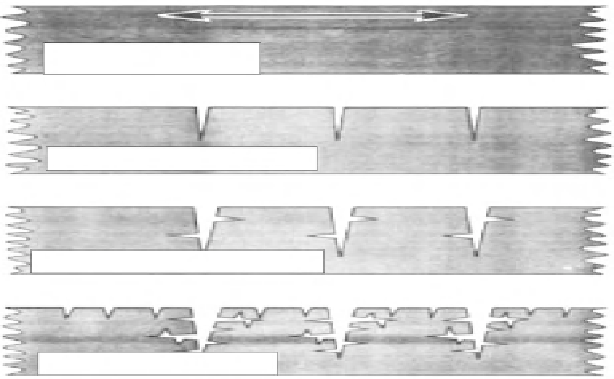Agriculture Reference
In-Depth Information
tensile stress
primary cracks
+ secondary cracks
+ tertiary cracks
Fig. 7.2
Gradual formation of cracks in a drying clay soil (From Dexter
1988
, altered)
Dry periods are especially important when it comes to
hydromorphic soils
.
These soils are associated with temporal water saturation in the lower part of the
topsoil,
e. g.
in most parts of the world during the winter period. Most commonly
this waterlogging occurs due to a concentrated water fl ow into topographic depres-
sions that are not well drained. Thus in rolling areas there may be just some spots of
hydromorphic soil within a fi eld. This hydromorphic soil can easily be recognized
when breaking it up with a spade by its blue-grey colour. When the fi eld is prepared
under dry conditions, these areas need deep cultivation. Further details are dealt
with below.
7.2.1.2
Texture
It is well known that the sequence freezing-thawing can substantially reduce the
strength of soils and thereby promote
break-up
of clods. A similar effect can be
obtained free of charge by weather sequences that cause wetting followed by dry-
ing. However, this effect depends very much on soil texture and its interaction with
water. The question is, how wetting or drying of a soil affects its volume. With
sandy soils, the water content hardly changes the volume. On the other hand, clay
soils swell during wetting and conversely shrink while drying. These processes
induce tensile stresses within the soil, and this in turn causes cracking of the dry
soil (Fig.
7.2
).
Therefore, if the texture within a fi eld is not uniform, it can be reasonable to
adjust the site-specifi c depth of cultivation for a promotion of soil break-up to this.
Below it is shown how such a control can be realized (Sect.
7.2.2.1
).

